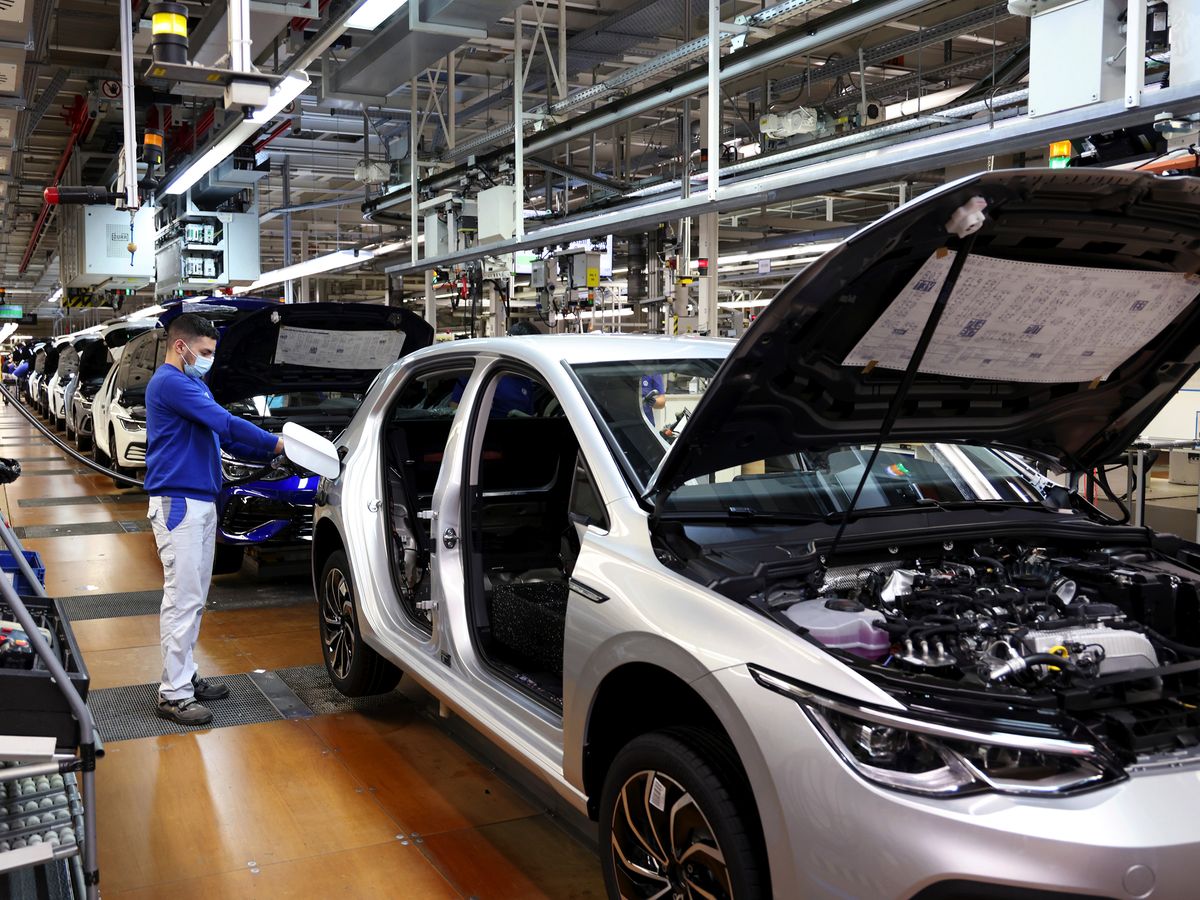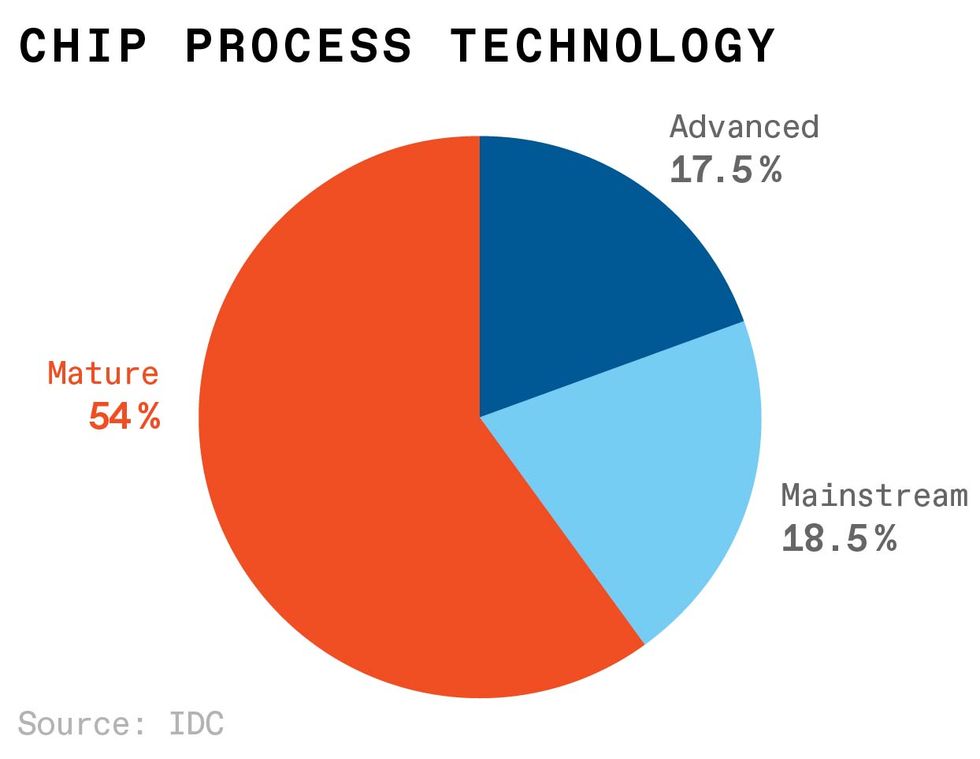One looming artifact of the pandemic that remains in 2023—the global chip shortage—has gratefully begun to recede. Unlike the state of things in mid-2021—when crimps in the semiconductor supply chain cropped up in big ways—supply and demand have become much less of a mismatch.
As IEEE Spectrum reported in the months since this story originally posted, the broken supply chains caused by the chip shortage have practically rewired whole segments of the tech industry. For the automotive industry, as we summarized in five charts that helped demystify the chip shortage, time eventually brought carmakers up from the end of a 52-week waiting list to get the chips they needed for their entertainment and driving-assistance systems. With chips finally reaching factory floors, their own manufacturing capacities were restored to prepandemic levels by the end of 2022.
Meanwhile, the mid-2022 passage of the CHIPS Act in the United States yielded a multibillion-dollar investment pool, some of which was dedicated to ramping up American manufacturing of the mature-generation chips upon which many industries—auto and otherwise—are so dependent. In March of 2023, the U.S. began disbursing CHIPS Act funding, while the E.U. considered getting into the chip-stimulus game as well.
The aim of Washington’s $50 billion expenditure is to prevent U.S. industrial concerns from falling victim to similar semiconductor supply chain snafus in the future. The EU’s Chips Act legislation has similar aims; also chief among them is bolstering its constituent nations’ resilience in the face of such supply-chain interruptions.
Story from 29 June 2021 follows:
Historians will probably spend decades picking apart the consequences of the COVID-19 epidemic. But the shortage of chips that it’s caused will be long over by then. A variety of analysts agree that the most problematic shortages will begin to ease in the third or fourth quarter of 2021, though it could take much of 2022 for the resulting chips to work their way through the supply chain to products. The supply relief will not be coming from the big, national investments in the works right now by South Korea, the United States, and Europe but from older chip fabs and foundries running processes far from the cutting edge and on comparatively small silicon wafers.
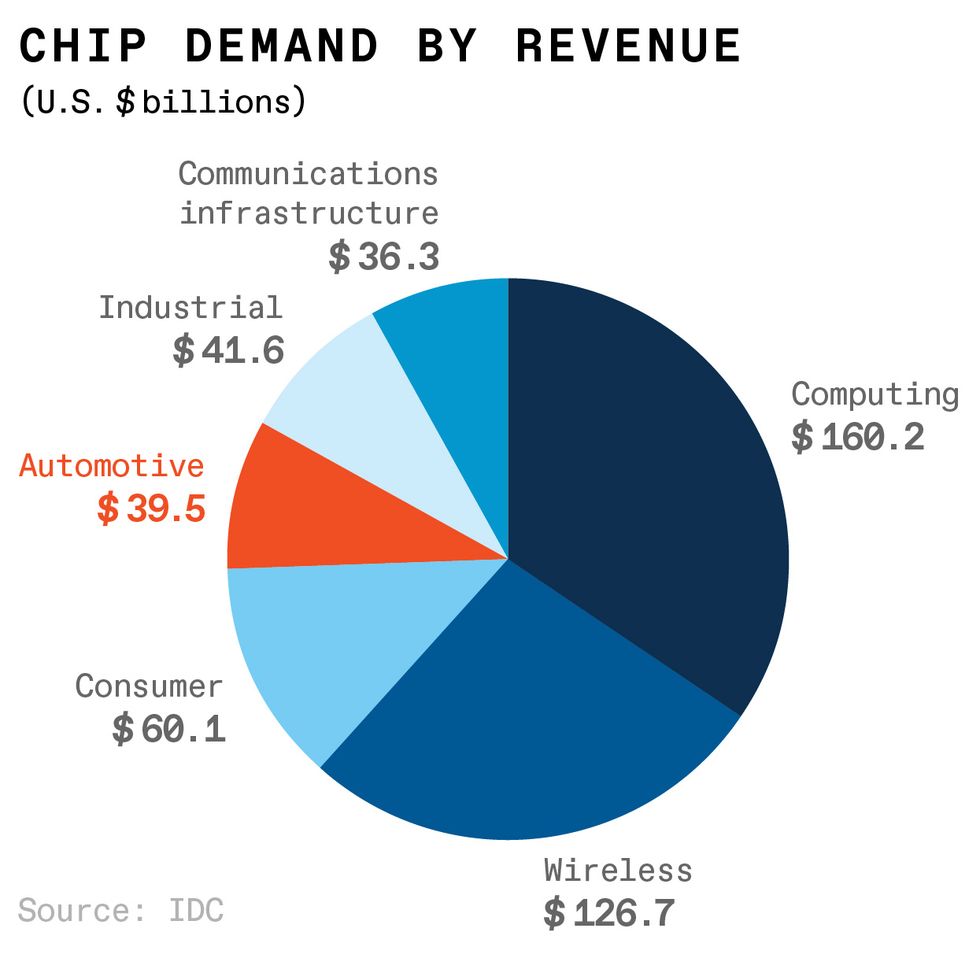
Before we get into how the shortage will end, it’s worth summing up how it began. With panic, lockdowns, and general uncertainty rolling across the globe, automakers cancelled orders. However, those conditions meant a big fraction of the workforce recreated the office at home, purchasing computers, monitors, and other equipment. At the same time entire school systems switched to virtual learning via laptops and tablets. And more time at home also meant more spending on home entertainment, such as TVs and game consoles. These, the 5G rollout, and continued growth in cloud computing quickly hoovered up the capacity automakers had unceremoniously freed. By the time car makers realized people still wanted to buy their goods they found themselves at the back of the line for the chips they needed.
At $39.5 billion, the auto industry makes up less than 9 percent of chip demand by revenue, according to market research firm IDC. That figure is set to increase by about 10 percent per year to 2025. However, the auto industry— which employs more than 10 million people globally— is something both consumers and politicians are acutely sensitive to, especially in the United States and Europe.
Chips for the automotive sector are made using processes intended to meet safety criteria that are different from those meant for other industries. But they are still fabricated on the same production lines as the analog ICs, power management chips, display drivers, microcontrollers, and sensors that go in everything else. “The common denominator is the process technology is 40 nanometers and older,” says Mario Morales, vice president, enabling technologies and semiconductors at IDC.
This chip manufacturing technology was last cutting edge 15 years ago or earlier, lines producing chips at these old nodes represent a full 54 percent of installed capacity, according to IDC. Today these old nodes are typically used on 200-mm wafers of silicon. To reduce cost, the industry began moving to 300-mm wafers in 2000, but much of the old 200-mm infrastructure continued and even expanded.
Despite the auto industry’s desperation, there’s no great rush to build new 200-mm fabs. “The return on investment just isn’t there,” says Morales. What’s more there are already many legacy-node plants in China that are not operating efficiently right now, but “at some point, they will,” he says, further reducing the incentive to build new fabs. According to the chip manufacturing equipment industry association SEMI, the number of 200-mm fabs will go from 212 in 2020 to 222 in 2022, about half the expected increase of the more profitable 300-mm fabs.
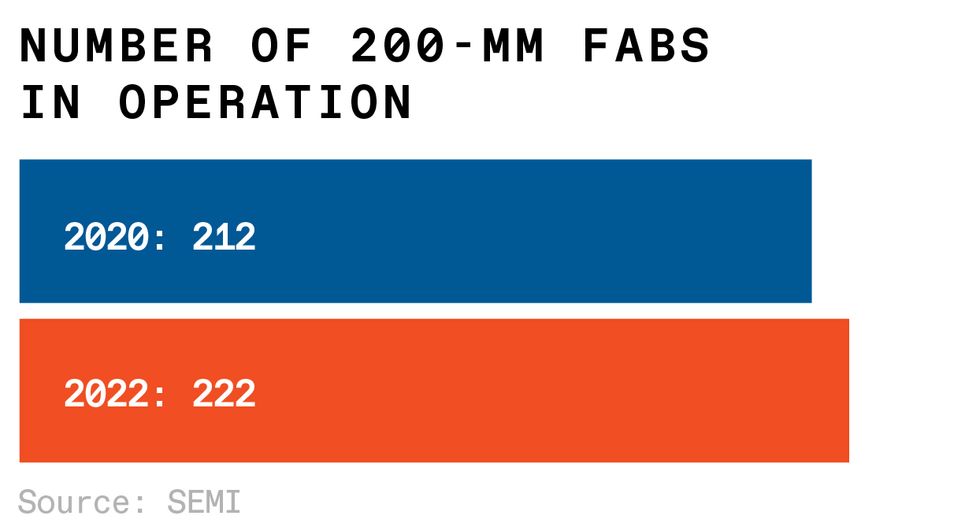
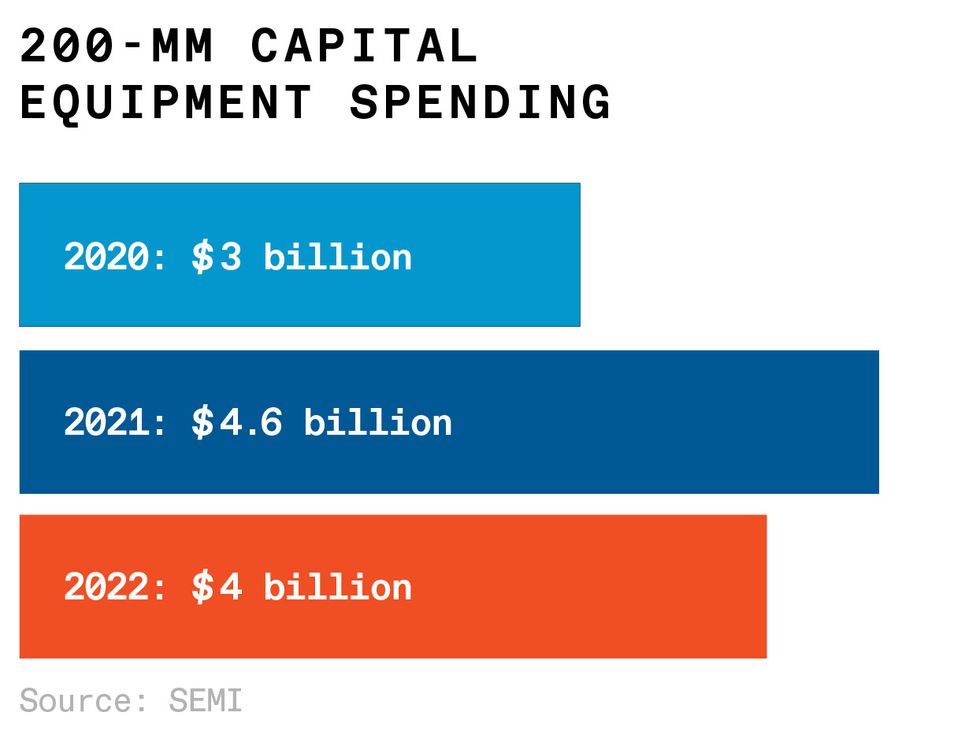
More than 40 companies will increase capacity by more than 750,000 wafers-per-month from the beginning of 2020 to the end of 2022. The long-term trend to the end of 2024 is for a 17 percent increase in capacity for 200-mm facilities. Spending on equipment for these fabs is set to rise to $4.6 billion in 2021 after crossing the $3-billion mark in 2020 for the first time in years, SEMI says. But then spending will drop back to $4 billion in 2022. In comparison, spending to equip 300-mm fabs is expected to hit $78-billion in 2021.
The chip shortage is happening simultaneously with national and regional efforts to boost advanced logic chip manufacturing. South Korea announced a push worth $450-billion over ten years, the United States is pushing legislation worth $52 billion, and the EU could plow up to $160-billion into its semiconductor sector. Chipmakers were already on a spending spree. Globally, capital equipment for semiconductor production grew 56 percent year-on-year through April 2021, according to SEMI. SEMI’s 3 June 2021 World Fab Forecast indicates that 10 new 300-mm fabs will start operation in 2021 with 14 more coming up in 2022.
“The push for building IC capacity around the world will certainly drive fab investment of the current decade to a new high,” says C hristian Gregor Dieseldorff, senior principal for semiconductors at SEMI. “We expect to see record spending and more new fab announcements in the next few years.”
One potential hiccup on the road to ending the shortage is that some of the skyrocketing demand appears to be from customers that are double-ordering to bulk up on inventory, says Jim Feldhan, president of Semico Research. “I don’t know of any product that needs twice the amount of analog” as the year before, he says. But manufacturers “don’t want a 12-cent part to hold up a 4K television,” so they’re stocking up.
The auto industry needs to do more than just stock up, according to Bharat Kapoor, lead partner, Americas, in the high-tech practice of global strategy and management consulting firm, Kearney. To keep future shortages at bay, the chip industry and auto executives need a more direct connection going forward so signals about supply and demand are clearer, he says.
This post was corrected on 30 June to clarify historic 200-mm fab equipment spending.
This article appears in the August 2021 print issue as “How and When the Chip Shortage Will End.”
- Chip Shortage Challenges Maker Manufacturers - IEEE Spectrum ›
- How to Keep the Automotive Chip Shortage From Happening Again - IEEE Spectrum ›
- The Chip Shortage, Giant Chips, and the Future of Moore’s Law - IEEE Spectrum ›
- These 5 Charts Help Demystify the Global Chip Shortage - IEEE Spectrum ›
- TSMC R&D Chief: There’s Light at the End of the Chip Shortage - IEEE Spectrum ›
- India Injects $15 Billion Into Semiconductors - IEEE Spectrum ›
- How Software Is Eating the Car - IEEE Spectrum ›
- Top Tech 2022: A Special Report - IEEE Spectrum ›
- The Chip Shortage Hurts Auto Sales a Lot, Consumer Electronics Only a Little - IEEE Spectrum ›
Samuel K. Moore is the senior editor at IEEE Spectrum in charge of semiconductors coverage. An IEEE member, he has a bachelor's degree in biomedical engineering from Brown University and a master's degree in journalism from New York University.
